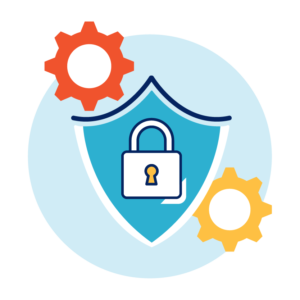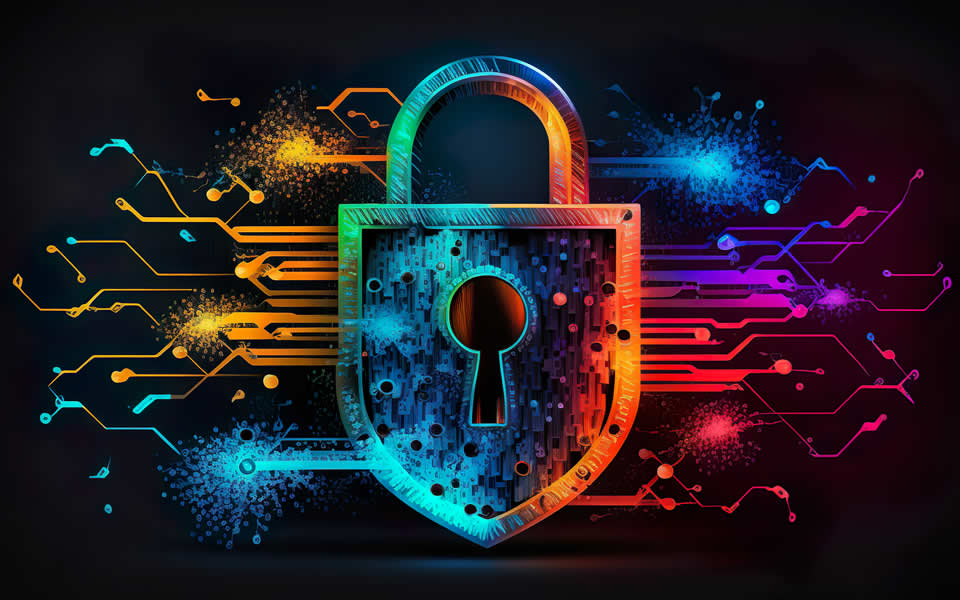Cybersecurity is the practice of protecting systems, networks, and programs from digital attacks. These attacks are usually aimed at accessing, changing, or destroying sensitive information, extorting money from users, or interrupting normal business processes. In an increasingly interconnected world, cybersecurity is essential for safeguarding personal, business, and governmental data.
Table of Contents
Importance of Cybersecurity
In today’s digital age, cybersecurity is of paramount importance. With the proliferation of internet-connected devices and the growing amount of sensitive data stored online, the risks associated with cyber threats have increased significantly. Effective cybersecurity measures help to:
- Secure personal data from unauthorized access and identity theft.
- Prevent disruptions to business operations and protect intellectual property.
- Safeguard critical infrastructure and prevent cyber-terrorism.
- Protect governmental and defense information from cyber espionage and attacks.
Types of Cyber Threats
Cyber threats come in various forms, each with unique characteristics and methods of attack. Understanding these threats is crucial for developing effective cybersecurity strategies. Some common types of cyber threats include:
Malware
Malware, short for malicious software, is designed to harm or exploit any programmable device, service, or network. Malware includes viruses, worms, Trojans, ransomware, spyware, adware, and more. It can disrupt operations, steal sensitive information, and cause significant damage to systems.
Phishing
Phishing attacks involve sending deceptive communications, often through email, that appear to be from a reputable source. These messages aim to trick individuals into providing sensitive information such as usernames, passwords, and credit card details. Phishing attacks are common and can lead to identity theft and financial loss.
Man-in-the-Middle (MitM) Attacks
MitM attacks occur when a cybercriminal intercepts and manipulates communication between two parties without their knowledge. This can happen through unsecured Wi-Fi networks, where the attacker positions themselves between the victim and the network. MitM attacks can result in data theft and unauthorized access to systems.
Denial-of-Service (DoS) Attacks
DoS attacks flood a network or system with traffic, overwhelming resources and rendering the system inoperable. Distributed Denial-of-Service (DDoS) attacks involve multiple compromised systems, often part of a botnet, targeting a single system. These attacks can disrupt online services and cause significant financial and reputational damage.
SQL Injection
SQL injection attacks exploit vulnerabilities in a website’s software by injecting malicious code into a SQL query. This allows attackers to access and manipulate databases, potentially exposing sensitive information. SQL injection is a common method used to breach web applications.
Zero-Day Exploits
Zero-day exploits target software vulnerabilities that are unknown to the software vendor. Because the vulnerability is undiscovered, there is no patch or defense available, making zero-day attacks particularly dangerous. Cybercriminals use these exploits to gain unauthorized access to systems and data.
Cybersecurity Measures
Effective cybersecurity involves a combination of technologies, processes, and practices designed to protect networks, devices, programs, and data from attack, damage, or unauthorized access. Key cybersecurity measures include:
Firewalls
Firewalls act as a barrier between a trusted network and an untrusted network, such as the Internet. They monitor and control incoming and outgoing network traffic based on predetermined security rules. Firewalls help prevent unauthorized access to systems and networks.
Antivirus and Anti-Malware Software
Antivirus and anti-malware software are essential tools for detecting and removing malicious software. They provide real-time protection and periodic system scans to identify and eliminate threats. Keeping these programs updated is crucial for defending against the latest malware.
Encryption
Encryption converts data into a code to prevent unauthorized access. It is widely used to protect sensitive information during transmission and storage. Strong encryption algorithms ensure that even if data is intercepted, it cannot be read without the decryption key.
Multi-Factor Authentication (MFA)
MFA adds an extra layer of security by requiring two or more verification factors to access a system. This could include something the user knows (password), something the user has (security token), and something the user is (biometric verification). MFA significantly reduces the risk of unauthorized access.
Regular Software Updates
Keeping software and systems updated is critical for cybersecurity. Software updates often include patches for vulnerabilities that could be exploited by cybercriminals. Regularly updating systems helps protect against known threats and improves overall security.
Employee Training and Awareness
Human error is a significant factor in many cyber incidents. Training employees on cybersecurity best practices, such as recognizing phishing attempts and using strong passwords, can significantly reduce the risk of cyber attacks. Continuous education and awareness programs are essential for maintaining a secure environment.

The Role of Cybersecurity Professionals
Cybersecurity professionals play a crucial role in protecting organizations from cyber threats. They are responsible for designing, implementing, and managing security measures to safeguard systems and data. Key responsibilities of cybersecurity professionals include:
- Risk Assessment: Identifying potential threats and vulnerabilities in systems and networks.
- Incident Response: Developing and executing plans to respond to and recover from cyber incidents.
- Security Monitoring: Continuously monitoring systems for signs of cyber threats and anomalies.
- Compliance: Ensuring that the organization adheres to relevant laws, regulations, and industry standards.
- Education and Training: Providing training and resources to employees to promote cybersecurity awareness.
Future Trends in Cybersecurity
As technology evolves, so do the methods used by cybercriminals. Staying ahead of these threats requires continuous innovation and adaptation. Some future trends in cybersecurity include:
Artificial Intelligence (AI) and Machine Learning
AI and machine learning are becoming integral to cybersecurity. These technologies can analyze vast amounts of data to detect patterns and anomalies, enabling faster and more accurate threat detection and response. AI-driven security tools can adapt to new threats in real time, providing a proactive defense mechanism.
Zero Trust Architecture
Zero trust architecture is a security model that assumes no user or system, inside or outside the network, should be trusted by default. It requires strict verification for every user and device attempting to access resources. Implementing zero trust helps prevent unauthorized access and reduces the risk of internal threats.
Quantum Computing
Quantum computing has the potential to revolutionize cybersecurity. While it promises significant advancements in computing power, it also poses challenges for current encryption methods. Developing quantum-resistant encryption algorithms will be crucial to maintaining data security in the future.
Cybersecurity in the Internet of Things (IoT)
The proliferation of IoT devices presents new cybersecurity challenges. Securing these devices requires robust authentication, encryption, and monitoring to prevent unauthorized access and data breaches. As IoT adoption grows, so will the need for comprehensive security solutions.
Conclusion.
Cybersecurity is a dynamic and critical field that plays a vital role in protecting our digital world. As cyber threats continue to evolve, so must our defenses. By implementing robust cybersecurity measures, staying informed about emerging threats, and fostering a culture of security awareness, we can safeguard our systems, data, and ultimately, our way of life.


Leave a Comment